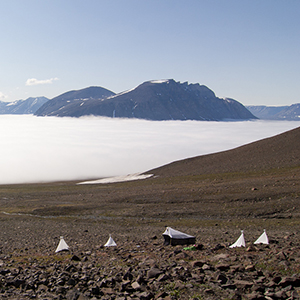Contact
Tomas Roslin, Professor Insect Ecology
Department of Ecology, SLU
tomas.roslin@slu.se 018-672383

Arthropods are arguably the most diverse arctic animal taxa, yet, how they respond to global change is poorly explored. This applies to arctic arthropod communities in particular, where there is a glaring lack of knowledge regarding their phenology, distributions and abundances. Besides, their dependence on abiotic conditions is poorly known. Understanding the consequences of rapid climate change for these groups is an urgent research priority, since the disruption of major arthropod-driven interactions, such as pollination, may have important repercussions throughout arctic ecosystems.
The arctic is warming more rapidly than any other ecosystem on earth. Due to its rate of change, the arctic region may provide early peeks into what next to expect in other biomes. Over the last two decades, we have thus invested much effort into understanding how arctic communities are structured overall, how arctic species interact with each other, and how arctic communities are changing with climate change.
Some of our bench-mark studies to date have revealed surprising complexity in the structure of arctic interaction networks. Where the previous view held that arctic populations are mainly affected by the harsh climate, we have shown how arctic species form highly complex interaction networks. Give how tightly the species are woven together by live interactions, overall response to climate change will be much different from the case where each species responded on its own. We have also shown that climate change is already reshaping communities across the Arctic. Different regions are changing at a different pace, and when we compare them we can find differential imprints of this differential change.
Arctic climate change will affect not only overall or mean conditions (macroclimate), but finer climatic variation within the landscapes (microclimate). The latter, fine-scale variation is likely to be what really matters for the species inhabiting the landscapes. Therefore, we work intensely on resolve arctic climatic variation at different scales using high-resolution remote-sensing data and physical models of the local climate. Our insights into climatic conditions we link to arctic arthropod biodiversity, which we describe using DNA barcoding of arthropod bulk samples. Some of our favourite field sites in the Arctic and Subarctic regions, respectively, are the Zackenberg Research Station (GREENLAND) Kilpisjärvi (FINLAND), the Varanger Peninsula (NORWAY).
Tomas Roslin, Professor Insect Ecology
Department of Ecology, SLU
tomas.roslin@slu.se 018-672383